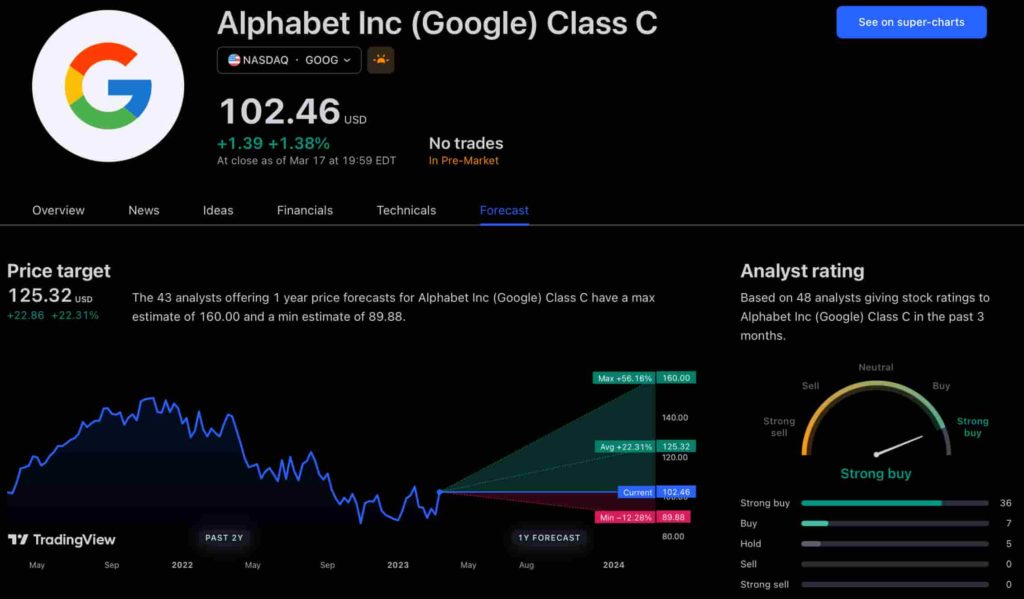The new app is called watchGPT and as I tipped off already, it gives you access to ChatGPT from your Apple Watch. Now the $10,000 question (or more accurately the $3.99 question, as that is the one-time cost of the app) is why having ChatGPT on your wrist is remotely necessary, so let’s dive into what exactly the app can do.
NEWS
Slack wants to be more than a text-based messaging platform


Last October as Slack was preparing for its virtual Frontiers conference, the company began thinking about different ways people could communicate on the platform. While it had built its name on being able to integrate a lot of services in a single place to alleviate the dreaded task-switching phenomenon, it has been largely text-based up until now.
More recently, Slack has started developing a few new features that could bring different ways of interacting to the platform. CEO Stewart Butterfield discussed them on Thursday with former TechCrunch reporter Josh Constine, now a SignalFire investor, in a Clubhouse interview.
The talk was about the future of work, and Slack believes these new ways of communicating could help employees better connect online as we shift to a hybrid work world — one which has been hastened by the pandemic over the last year. There is a general consensus that many companies will continue to work in a hybrid fashion, even when the pandemic is over.
For starters, Slack aims to add a way to communicate by video. But instead of trying to compete with Zoom or Microsoft Teams, Slack is envisioning an experience that’s more like Instagram Stories.
Think about the CEO sharing an important announcement with the company, or the kind of information that might have gone out in a companywide email. Instead, you can skip the inbox and deliver the message directly by video. It’s taking a page from the consumer approach to social and trying to move it into the enterprise.
Writing in a company blog post earlier this week, Slack chief product officer Tamar Yehoshua was clear this was going to be an asynchronous approach, rather than a meeting kind of experience.
“To help with this, we are piloting ways to shift meetings toward an asynchronous video experience that feels native in Slack. It allows us to express nuance and enthusiasm without a meeting,” she wrote.
While it was at it, Slack decided to create a way of just chatting by voice. As Butterfield told Constine in his Clubhouse interview, this is essentially Clubhouse (or Twitter Spaces) being built for Slack.
Yeah, I’ve always believed the ‘good artists copy, great artists steal’ thing, so we’re just building Clubhouse into Slack, essentially. Like that idea that you can drop in, the conversation’s happening whether you’re there or not, you can enter and leave when you want, as opposed to a call that starts and stops, is an amazing model for encouraging that spontaneity and that serendipity and conversations that only need to be three minutes, but the only option for you to schedule them is 30 minutes. So look out for Clubhouse built into Slack.
Again, it’s taking a consumer social idea and applying it to a business setting with the idea of finding other ways to keep you in Slack when you could be using other tools to achieve the same thing, whether it be Zoom meetings, email or your phone.
Butterfield also hinted that another feature — asynchronous audio, allowing you to leave the equivalent of a voicemail — could be coming some time in the future. A Slack spokesperson confirmed that it was in the works, but wasn’t ready to share details yet.
It’s impossible to look at these features without thinking about them in the context of the $27 billion Salesforce acquisition of Slack at the end of last year. When you put them all together, you have this set of tools that let you communicate in whatever way makes the most sense to you.
When you combine that Slack Connect DM, a new feature to communicate outside the organization that was released this week to some controversy, as people wanted assurances that they could control spam and harassment, it takes the concept one step further — outside the organization itself.
As part of a larger entity like Salesforce, these tools could be useful across sales, service and even marketing as a way to communicate in a variety of ways inside and outside the organization. And they greatly expand the value prop of Slack as it becomes part of Salesforce sometime later this year.
While it began talking about the new audio and video features last fall, the company has been piloting them since the beginning of this year. So far Slack is not saying when the new features will be generally available.
Facebook Faces Yet Another Outage: Platform Encounters Technical Issues Again

Uppdated: It seems that today’s issues with Facebook haven’t affected as many users as the last time. A smaller group of people appears to be impacted this time around, which is a relief compared to the larger incident before. Nevertheless, it’s still frustrating for those affected, and hopefully, the issues will be resolved soon by the Facebook team.
Facebook had another problem today (March 20, 2024). According to Downdetector, a website that shows when other websites are not working, many people had trouble using Facebook.
This isn’t the first time Facebook has had issues. Just a little while ago, there was another problem that stopped people from using the site. Today, when people tried to use Facebook, it didn’t work like it should. People couldn’t see their friends’ posts, and sometimes the website wouldn’t even load.
Downdetector, which watches out for problems on websites, showed that lots of people were having trouble with Facebook. People from all over the world said they couldn’t use the site, and they were not happy about it.
When websites like Facebook have problems, it affects a lot of people. It’s not just about not being able to see posts or chat with friends. It can also impact businesses that use Facebook to reach customers.
Since Facebook owns Messenger and Instagram, the problems with Facebook also meant that people had trouble using these apps. It made the situation even more frustrating for many users, who rely on these apps to stay connected with others.
During this recent problem, one thing is obvious: the internet is always changing, and even big websites like Facebook can have problems. While people wait for Facebook to fix the issue, it shows us how easily things online can go wrong. It’s a good reminder that we should have backup plans for staying connected online, just in case something like this happens again.
NEWS
We asked ChatGPT what will be Google (GOOG) stock price for 2030

Investors who have invested in Alphabet Inc. (NASDAQ: GOOG) stock have reaped significant benefits from the company’s robust financial performance over the last five years. Google’s dominance in the online advertising market has been a key driver of the company’s consistent revenue growth and impressive profit margins.
In addition, Google has expanded its operations into related fields such as cloud computing and artificial intelligence. These areas show great promise as future growth drivers, making them increasingly attractive to investors. Notably, Alphabet’s stock price has been rising due to investor interest in the company’s recent initiatives in the fast-developing field of artificial intelligence (AI), adding generative AI features to Gmail and Google Docs.
However, when it comes to predicting the future pricing of a corporation like Google, there are many factors to consider. With this in mind, Finbold turned to the artificial intelligence tool ChatGPT to suggest a likely pricing range for GOOG stock by 2030. Although the tool was unable to give a definitive price range, it did note the following:
“Over the long term, Google has a track record of strong financial performance and has shown an ability to adapt to changing market conditions. As such, it’s reasonable to expect that Google’s stock price may continue to appreciate over time.”
GOOG stock price prediction
While attempting to estimate the price range of future transactions, it is essential to consider a variety of measures in addition to the AI chat tool, which includes deep learning algorithms and stock market experts.
Finbold collected forecasts provided by CoinPriceForecast, a finance prediction tool that utilizes machine self-learning technology, to anticipate Google stock price by the end of 2030 to compare with ChatGPT’s projection.
According to the most recent long-term estimate, which Finbold obtained on March 20, the price of Google will rise beyond $200 in 2030 and touch $247 by the end of the year, which would indicate a 141% gain from today to the end of the year.
Google has been assigned a recommendation of ‘strong buy’ by the majority of analysts working on Wall Street for a more near-term time frame. Significantly, 36 analysts of the 48 have recommended a “strong buy,” while seven people have advocated a “buy.” The remaining five analysts had given a ‘hold’ rating.

The average price projection for Alphabet stock over the last three months has been $125.32; this objective represents a 22.31% upside from its current price. It’s interesting to note that the maximum price forecast for the next year is $160, representing a gain of 56.16% from the stock’s current price of $102.46.
While the outlook for Google stock may be positive, it’s important to keep in mind that some potential challenges and risks could impact its performance, including competition from ChatGPT itself, which could affect Google’s price.
Disclaimer: The content on this site should not be considered investment advice. Investing is speculative. When investing, your capital is at risk.
NEWS
This Apple Watch app brings ChatGPT to your wrist — here’s why you want it

ChatGPT feels like it is everywhere at the moment; the AI-powered tool is rapidly starting to feel like internet connected home devices where you are left wondering if your flower pot really needed Bluetooth. However, after hearing about a new Apple Watch app that brings ChatGPT to your favorite wrist computer, I’m actually convinced this one is worth checking out.
-

 PPC5 days ago
PPC5 days ago19 Best SEO Tools in 2024 (For Every Use Case)
-

 MARKETING6 days ago
MARKETING6 days agoStreamlining Processes for Increased Efficiency and Results
-
SEARCHENGINES6 days ago
Daily Search Forum Recap: April 17, 2024
-

 SEO6 days ago
SEO6 days agoAn In-Depth Guide And Best Practices For Mobile SEO
-

 PPC6 days ago
PPC6 days ago97 Marvelous May Content Ideas for Blog Posts, Videos, & More
-
SEARCHENGINES5 days ago
Daily Search Forum Recap: April 18, 2024
-

 MARKETING6 days ago
MARKETING6 days agoEcommerce evolution: Blurring the lines between B2B and B2C
-
SEARCHENGINES4 days ago
Daily Search Forum Recap: April 19, 2024















